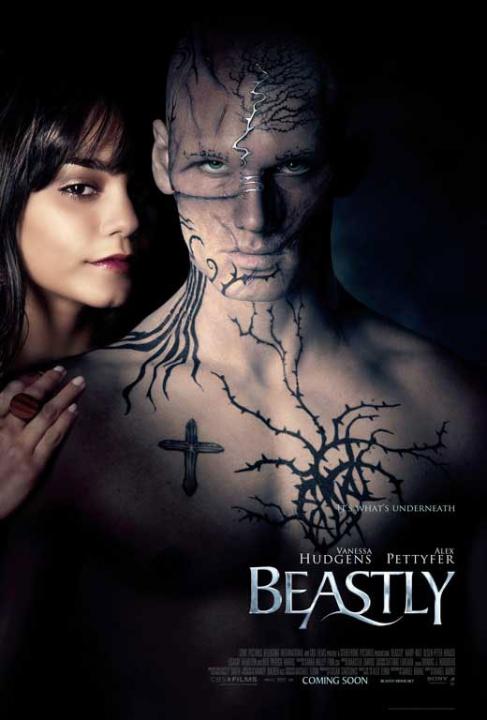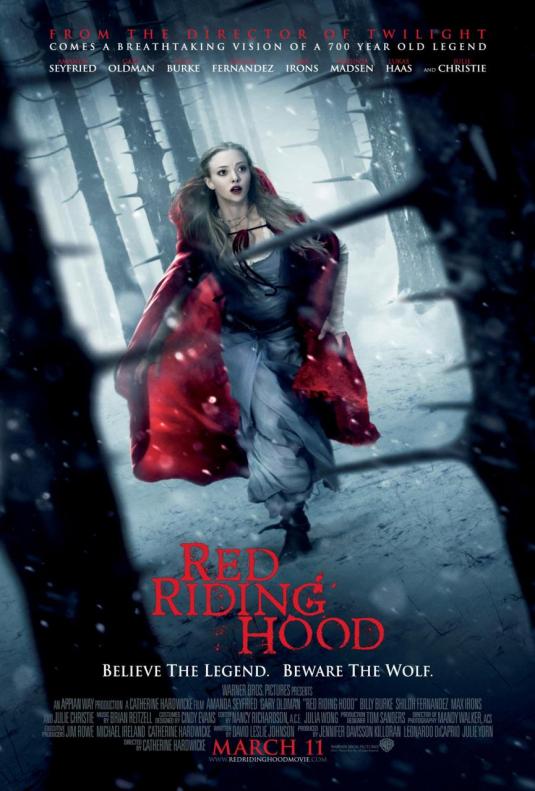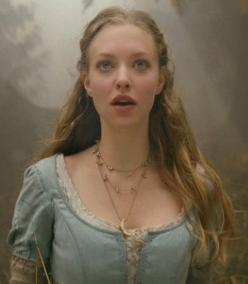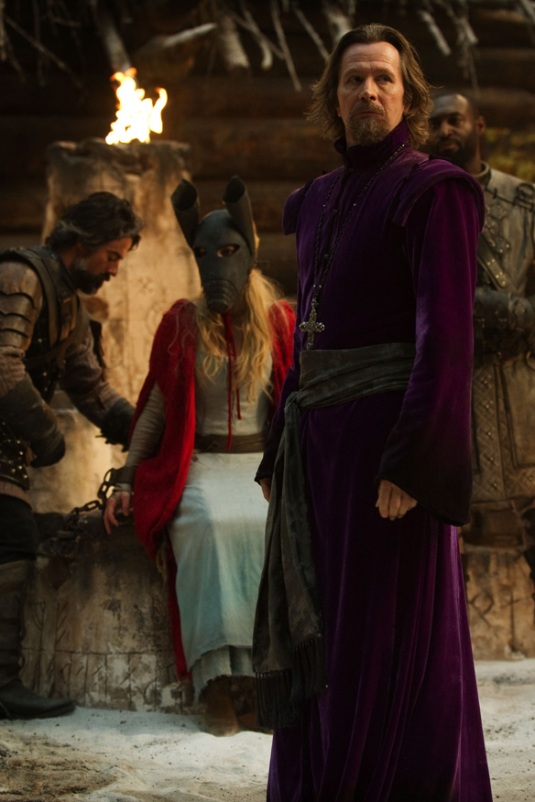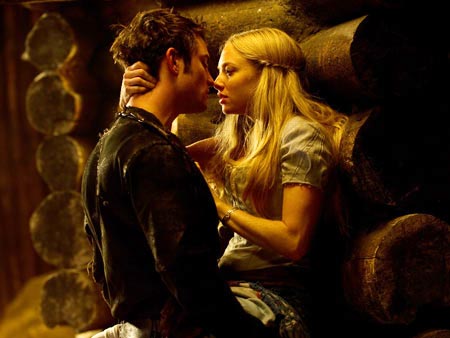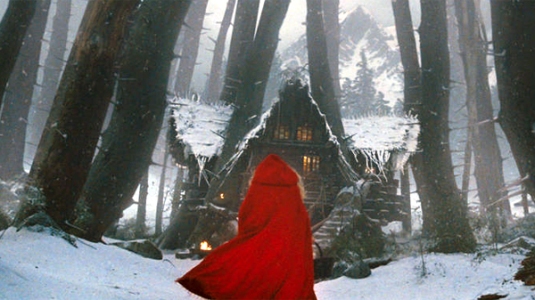Night Tide and She Creature
by Mina Kelly
I had a bit of a flashback to my posts for last year’s Fae Awareness when I came to watch Night Tide and She Creature; as Ondine was rooted in the real world while The Secret of Roan Inish embraced the myth wholeheartedly, the same is true of Night Tide and She Creature respectively. Last year’s films were romances. This year’s are horror.
The following review spoils both films pretty thoroughly, I’m afraid.
In Spanish and Italian the word of mermaid is Sirena, in French Sirène, Portuguese Sereia, Polish Syrena, Romanian Sirenă. Trust English to be the odd one out, huh? Of course, the irony is that the sirens of Greek myth were very definitely not sea creatures, but instead actually had several bird features, which came and went as the myths evolved.
The first mermaid as we’d recognise her to appear mythologically is Atargatis, mother of an Assyrian queen. Ashamed of accidentally killing her lover she tries to turn into a fish, but she’s so beautiful her top half remains human and only her legs transform. At least this explains the doomed romance angle we’re still so hung up on today. I’ve always found it a bit weird how strongly associated they are with romance: as Fry in Futurama complains, “Why couldn’t she be the other kind of Mermaid? With the fish part on top and the lady part on the bottom!”
The usual way around this is the give the mermaid legs under certain circumstances, which both Night Tide and She Creature do. In a cute reversal, while Night Tide‘s mermaid only has a tail at full moon, She Creature‘s only has legs then.

Night Tide opens with Dennis Hopper as a young sailor, Johnny wandering into a bar. He sees a beautiful woman, Mora, and makes an excuse to join her at her table. She acquiesces, but when he tries to strike up a conversation she cuts him short, insisting she wants to listen to the music. He offers to buy her a drink, she declines. A strange old lady comes to the table and talks to the beautiful woman in a foreign language, later revealed to be Greek (I have no idea if it’s actually Greek or just gobbledegook). Mora is frightened and leaves the bar in a panic, asking Johnny to pay off her tab. Johnny does, and follows Mora home, cornering her outside her flat and demanding she invites him up. She refuses, he kisses her, she tells him he can come over for breakfast the next day.
This film came out a year after Psycho, and frankly, after that opening, I had a whole different idea about what sort of plot it was going to have (especially after the breakfast scene, in which Johnny goes on about how attached he was to his mother!). Instead it turns out we’re meant to find Johnny’s ‘forwardness’ charmingly awkward, rather than the actions of a date-rapist.
Anyway, Mora lives over a merry-go-round at aVeniceBeachfairground and plays a mermaid as part of the sideshow. She’s got two dead boyfriends and a lot of gossip going around about her, and she believes she’s a mermaid. And despite all that I can’t shake the feeling she could do better than Johnny. She’s also got a mad, drunk, ex-British Navy sea captain as a guardian, who keeps heads in jars in his apartment.
Johnny isn’t sure what to think of it all, and even I felt a little sympathy for him as he tried to figure out what the hell is going on. He’s sure beautiful, dainty Mora can’t be a killer, but what if she can’t help herself? What if it’s her mermaid blood?
This theory is put paid to when they go swimming, in a scene I had to watch twice to really take in what just happened. Dennis Hopper actually proves he can act (about time!), and collapses into delirium. When he wakes up he’s accused of killing Mora; I have a moment when I think the film is turning on its head again. I’m actually hooked. What the hell is going on here?
Sadly, nothing as exciting as I’d hoped, and it’s all wrapped up in a rather cliché way. Shame.
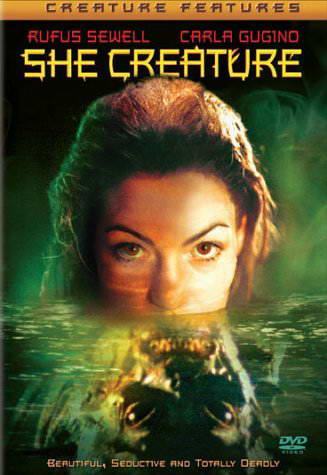
Night Tide is most commonly compared with Carnival of Souls, and visually the lighting and camera work have something in common. It’s well shot, but while the visuals haven’t dated the plot has, and it’s hard to sympathise with the main characters. Hopper has a few shining moments, but I’m not sure they’re worth watching the rest of the film for unless you’re already a fan.
She Creature also has a sideshow mermaid as the female lead, but she’s a rather more intelligent character than Mora. Lily, played by Carla Gugino, is sleeping with the carnival’s manager Angus (Rufus Sewell, AKA that guy! You know, he’s in. Um. That film.). For the early twentieth century Lily’s got a good bit of independence and seems to enjoy her life with the other carnies, until Angus’s desire for money leads them to kidnap a real mermaid.
That’s right: She Creature gives us a real mermaid, almost from the beginning. She’s beautiful and alien and terrifying, and like Lily you can’t help but be drawn to her. Angus has the bright idea of taking her toAmerica. The boat makes for a great (and cost-effective) setting for the rest of the film, but you have to wonder why somewhere with less ocean to cross wouldn’t have been just as good. Angus is smart, but only in certain directions.
The film has a lot of fun with the claustrophobia of the boat and the tension between the sailors and the carnies. Lily suffers the worst of it as the only woman on board, loomed over by men threatening to sexually assault her and snubbed in a way even the black character is (though turn of the century attitudes are name checked, as are modern ones – he dies first). It’s like a haunted house where everyone knows where the ghost is: in the tank, licking blood from her lips.
Lily has a diary belonging to the last woman to spend a lot of time with the mermaid. The diary contains scientific observations about the mermaid, such as what she eats (human flesh) and how regularly (a lot more often than she appears to be right now). It’s fascinating because it shows a scientific rigor none of the male characters match. Lily’s speculations are dismissed as female flights of fantasy, no matter how carefully she phrases things. There’s a wonderful scene where she tries to figure out how to tell Angus she’s pregnant, and she thinks it’s due to the mermaid. Oh, she also appears to be possessed by the mermaid sometimes. Though frankly I’d have tried to strangle Angus without the help of a supernatural sympathiser by this point.
The mermaid briefly turns into a human thanks to the full moon, in a sequence that isn’t really necessary for anything except confirming that most of the men on board deserve to die, then ramps it up into full on creature feature mode. The effects are decent, and it’s the only place the plot can really go, but if it’s killing creatures you’re into you’ll find the climax fairly standard.
She Creature is a made of TV movie taking advantage of an unused made for cinemas plot. It makes a good hash of it, and in some ways the deficits are more easily forgiven than they would be on a big screen, even though they’re plot based. For a horror film it frankly isn’t that scary and very few of the plot twists come as genuine surprises, but the emphasis on women using the scientific process is a nice change in this sort of thing. Lily is a smart, likeable heroine who very quickly realises she’s got more in common with the mermaid than the men on board. Lily makes the film worth watching.
In both films mermaids represent Otherness, specifically the Otherness of women. Night Tide speaks to its audience through Johnny: his actions are shown, his motivations explained, his psychology understood. Mora is a mystery even to herself, her Otherness heightened by her exotic history. She Creature speaks to its audience through Lily: she knows better than anyone else on the ship what it’s like to be one of a kind and to be treated as though she has less understanding than a child, but the male characters refuse to make an effort understand her or accept that her point of view is as rational as theirs. Though the audience see her point of view the characters still perceive her as Other.
Both films are worth watching, but it’s She Creature that’s worth watching more than once.
Visit Mina Kelly at solelyfictional.org.








